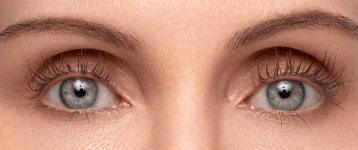Upneeq lifts tired-looking eyelids fast
Meet Upneeq® (oxymetazoline hydrochloride ophthalmic solution), 0.1%, the first and only FDA-approved prescription eye drop for adults with low-lying eyelids (also known as acquired blepharoptosis or ptosis). It provides a non-surgical eyelid lift, quickly lifting eyelids for more awake-looking eyes.
Just one drop per affected eye, once daily, is clinically proven to give visible results — lifted and more open eyelids in as fast as 5 minutes that can last up to 8 hours.
Say bye-bye to tired-looking eyelids, and hello to a refreshed, more awake-looking you. See what it feels like to live with eyes wide open. If you have low-lying eyelids, find out if Upneeq is right for you.


Actual patient. Individual results may vary. Average upper eyelid lift with Upneeq in clinical studies was 1 mm.
DO YOU HAVE LOW-LYING EYELIDS?
Learn More About UpneeqExperience Upneeq
Visible results
When it comes to eyelids, a little lift goes a long way. Upneeq provides a non-surgical eyelid lift that is clinically proven to lift and open upper eyelids.
Fast-acting, long-lasting
Just one drop in each eye can temporarily lift upper eyelids in as little as 5 minutes, and last up to 8 hours.
Easy to incorporate
Our single-use vials are FDA-approved for once daily use, making it easy to lift low-lying eyelids in your everyday routine for a brighter, more awake-looking appearance.
In clinical trials of Upneeq
84%
of patients have had some form of improvement in eyelid lift.
88%
of patients have had some form of improvement in their upper field of vision.
AS SEEN IN
Real patients, real eye-opening results
I have a droopy eyelid and not ready for surgery yet. I was tired of people asking me about my eye...love it!

UPNEEQ INSIGHTS

Correcting Ptosis
If you or someone you know has been diagnosed with acquired ptosis, also known as drooping eyelids, you might be exploring ways to treat this condition. Ptosis not only affects your appearance but can also impair your vision and quality of life.

Why Do I Look Tired?
If you frequently find yourself asking, "Why do I look tired?" despite feeling rested, it may be worthwhile to explore whether acquired ptosis could be the reason.

Diagnosing Ptosis: What to Expect When You Visit Your Doctor
Understanding the steps involved in diagnosing ptosis can demystify the process and help you prepare for your doctor's visit. If you suspect you have acquired ptosis, don’t hesitate to consult with your doctor to learn more and discuss the best treatment options tailored to your condition.








